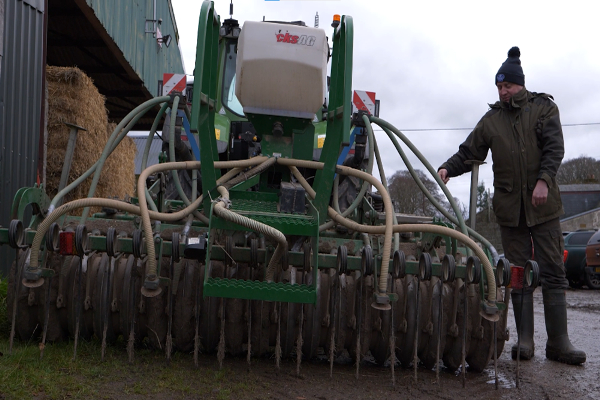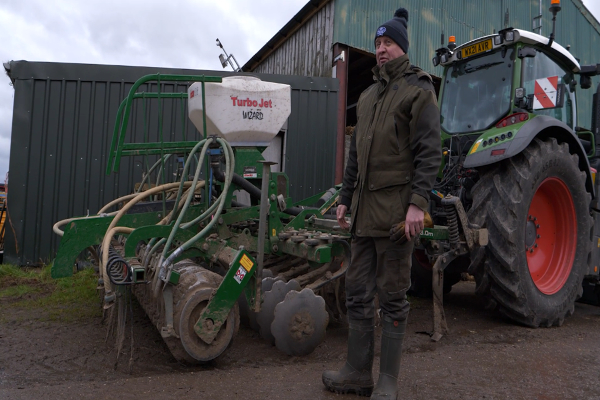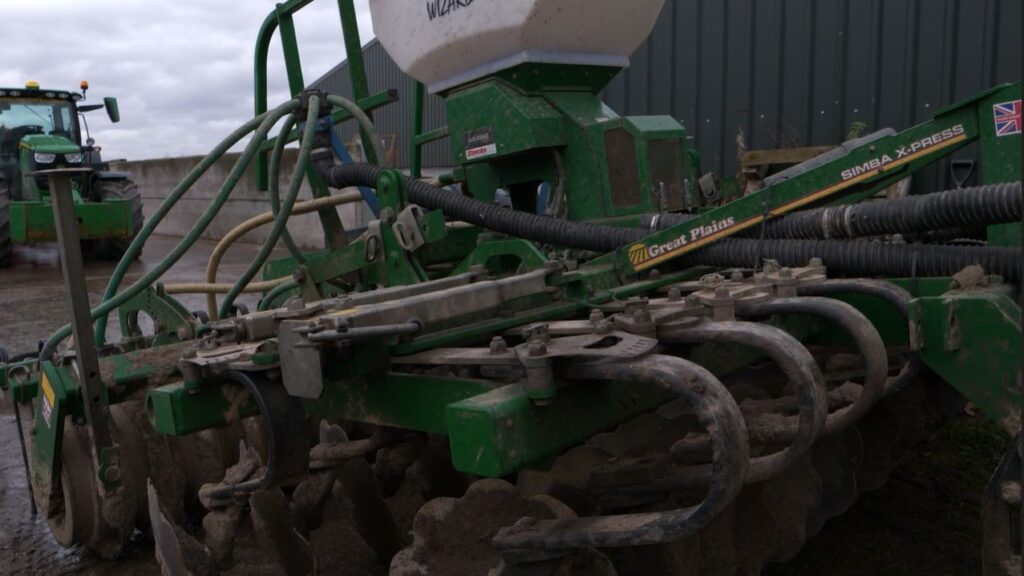Profiting from Reduced Tillage – Minimum Tillage at St-Martins
10 April 2024Mark McCallum farms at St-Martins on the Black Isle. The farm is an arable unit extending to 220 ha of owned and rented land. Cropping is predominantly Spring Barley at 140 ha, Winter Wheat at 25 ha, Winter Barley 25 ha and 25ha of oilseed rape. The predominant soil type on the farm is sandy loams.
The majority of the cultivation at St Martins is conventional ploughing. This is largely due to the spring barley being a very significant part of the rotation and the challenges of growing this crop using min-till techniques. However, success has been seen with OSR and cover crops. Since the Black Isle is so far North the weather window to establish winter crops and particularly oil seed rape is challenging. Timeliness is key to successful establishment. This is why the decision was made to move away from ploughing and investigate minimum-tillage options for establishment.

A number of different drills were demonstrated and considered for sowing rape but the most successful one has been a Simba X-press disc cultivator with a sub-soiler tool bar in front of the discs. The discs are then followed by a packing roller to consolidate the seed. It is a cultivator with a small seeds sowing kit fitted to it. The OSR is usually established following winter barley. The straw is baled and removed, and the rape crop is drilled directly into this stubble. This drill has been used by the business for sowing their area of OSR and double that area in a contracting basis for 10 years now with continued success. Seed rates of 30-40 seed per m2 are used. The sub-soiler action of the drill is key to well established rape. The use of this drill has reduced diesel use significantly and reduced the number of passes required on the farm. The OSR is now established in one pass.

The business has also been establishing after harvest cover crops by drilling directly into cereal stubbles with a Vaderstad Spirit drill. It is a disc drill and has been successful with good establishment achieved quickly. A disc drill disturbs very little soil, just a shallow tilth to create a fine seed bed. In comparison to a tine drill which disturbs more ground and creates a larger area of tilth. This shallow working depth also means it has low draft requirements, which saves diesel and time. Both have their pros and cons, but at St Martins this drill is ideal for sowing cover crops. The disc drill retains moisture in the soil which is very important with potentially dry weather following harvest. This far north, for cover crops sown after spring barley to be successful they must be established quickly. Soils must be friable with little compaction. In comparison to a conventional system there may be days when it is not appropriate to work the ground, however because working rates are faster the area can still be covered with the min till method.
Written by Malcolm Macdonald
Sign up to the FAS newsletter
Receive updates on news, events and publications from Scotland’s Farm Advisory Service

